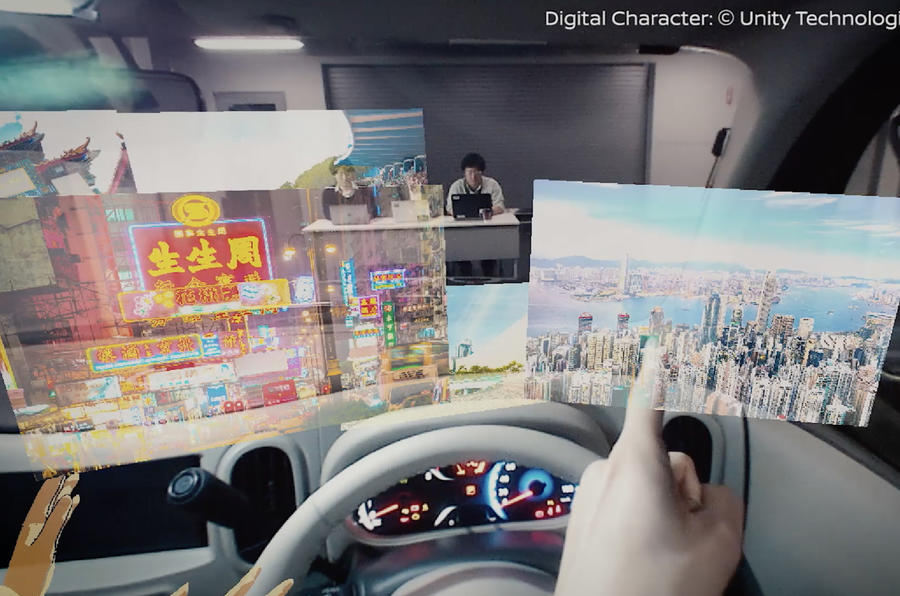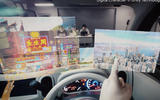Nissan has developed new technology that will allow vehicles to show drivers ‘invisible’ dangers hidden behind buildings and around corners.
The Invisible-to-Visible (I2V) system is powered by data gathered by car sensors and online information provided by connected devices. It has been developed by Nissan’s Intelligent Mobility division and will be unveiled at the Consumer Electronics Show in Las Vegas next week.
The I2V device uses what Nissan calls "Omni-Sensing" technology to gather real-time data from nearby traffic, the vehicle’s surroundings and its interior. That allows it to create a 360deg ‘virtual space’ around the car, which means it can react to its immediate surroundings and anticipate what’s ahead – so Nissan says it can know what’s around a blind corner.
To make it more “enjoyable”, Nissan has developed a system that, it says, will present this information to drivers “in an interactive, human-like way”, using avatars that appear inside the car.
Nissan also claims the system will be able to give more in-depth information about traffic and travel times, allowing it to suggest the fast-moving lane to pick in heavy traffic, or scanning for available spaces in car parks.
The technology uses Nissan’s semi-autonomous systems and is also designed to work with fully autonomous cars in the future. The firm says that, for example, it can detect rain and project images of a sunny day inside a vehicle.
Nissan says that the I2V system also enhances connectivity, potentially allowing friends and family to be displayed inside cars as augmented-reality avatars.
Read more
CES 2019: Hyundai Elevate 'walking car' revealed
CES 2018: Nissan's Leaf-powered coffee machine and car tech that could change the world
CES 2018: how technology is disrupting the world
















Join the debate
Add your comment
What happened to anticipation
What happened to anticipation and skill when driving a car? This stuff might be ok for fully autonomous driving, but until then its just another gimmick some will rely on to concentrate even less on what they're doing.
Who is asking for this stuff?
I love tech, but this is vastly complicated and offers dubious benefits in my opinion.
Road safety and congestion seem to be the drivers for it all, and it’s worth developing, but seeing the computing power required and the lack of standardisation across the industry scares the hell out of me. What happens when the unlucky happens and the sensor or computer error causes one to plow into a bus stop queue?
Are legislators also forgetting that some people get pleasure from driving, and that not all areas are congested.
Creepy?
A bit disturbing this tech, any more help(?) driving a Car and we will need a co-Pilot!